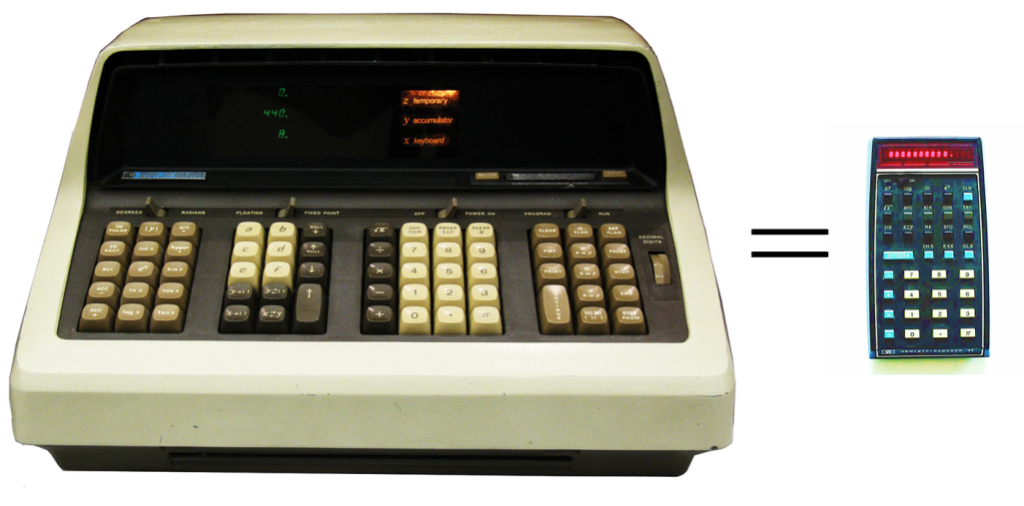Silicon Valley, 1968: The boffins at Hewlett-Packard were still basking in the wonder of their latest creation (the typewriter-sized 9100A desktop calculator) when their boss, the legendary Bill Hewlett pointed at the machine and said; ‘I want the next one to fit in my shirt pocket.’
In one breath he gave his engineers two things every designer needs: an exciting challenge, constrained by specific parameters.
Now they needed the third ingredient: a wide selection of ideas, from the obvious to the crazy. Any idea would be considered so long as it didn’t weigh a lot, cost a lot, need a lot of power or take up a lot of room.
For a start, the 9100A used 68 separate keys (and half a dozen switches) whereas the new machine would have to work with only half as many. That’s when the boffins thought of using keys in combination (like say, control-alt-delete) which got that number down to 35 keys, which they redesigned from scratch to make them simpler, smaller and closer together.
But fitting into Bill’s pocket wasn’t just about size: weight would be a huge issue as the heaviest thing in any electronic device is almost always the power supply. Batteries were the obvious choice but that meant the power demands of the machine would have to be dramatically lower than anything that had ever been built before.
The designers investigated every possible power saving, right down to a more streamlined form of mathematical notation that did away with parentheses (so that an equation like “[3 – 4] + 5” became “3 4 – 5 +”) and although you might struggle to see the improvement, this ‘Reverse Polish Notation’ actually requires a lot less processing, and therefore, power.
The team explored hundreds of new and unusual ideas and synthesised the best of them into the world’s first handheld scientific calculator, the HP35, a product that killed the slide rule, revolutionised electronic design and made Hewlett-Packard a fortune.
A lot of which ended up in Bill’s pocket.

There are No Responses to this post. Jump In!